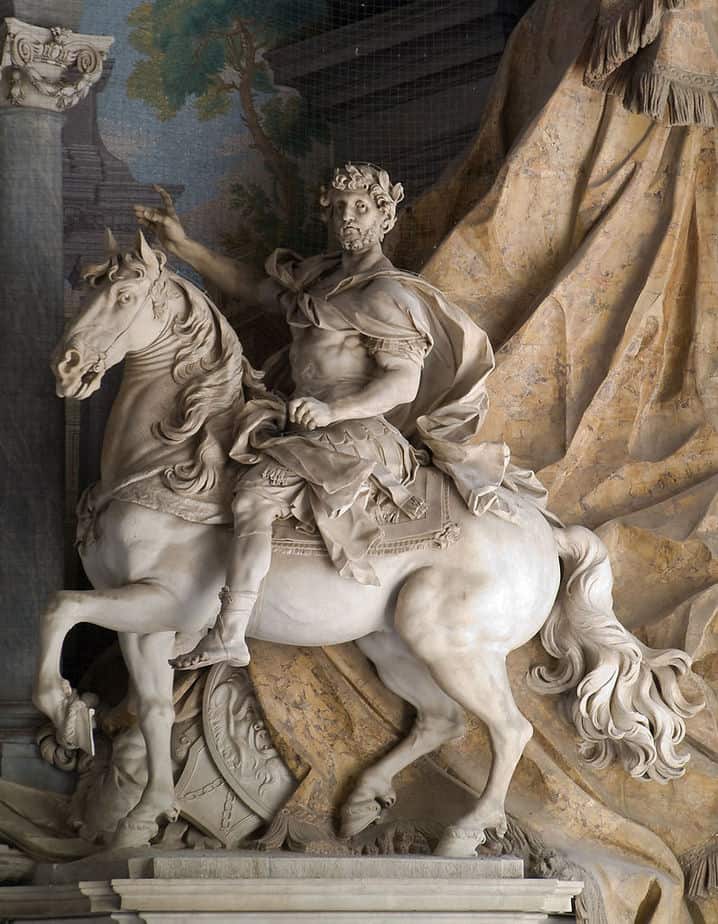Top 10 Facts about Charlemagne
Top 10 Facts about Charlemagne
Somewhere in the range of 768 and 814 CE, Charlemagne—otherwise called Karl or Charles the Great—decided a domain that traversed the greater part of Western Europe. Following quite a while of determined fighting, he managed present-day France, Germany, Belgium, the Netherlands, and different domains. The Carolingian Renaissance (a restoration named for the administration established by Charlemagne’s granddad) emerged from the carnage, with a quickened imaginative and scholarly yield that both praised artefact and pushed for a recently normalized Christian culture. In any case, the might of this realm laid on Charlemagne alone, and after his demise, it immediately self-destructed. Here are 13 realities about the main Holy Roman Emperor.
1.His father was not born a King.
Charlemagne’s dad, Pepin III—regularly called Pepin the Short—was city hall leader of the royal residence (manager of the imperial court) before he was named the principal King of the Franks. After a deliberate mission to become ruler, Pepin at long last became a lord in 751, and after three years was formally blessed by the pope, who simultaneously blessed Pepin’s children Carloman and Charles (the future Charlemagne) with the sacred oil that exhibited their extraordinary status. Pepin III served until 768.
2. His brother dies soon after becoming Co-King.
After Pepin III kicked the bucket, Charlemagne imparted capacity to his more youthful sibling Carloman, with the two going about as joint lords. It was anything but an easily shared rule, notwithstanding, as proven by a 769 scene in which Carloman appeared to subvert Charlemagne’s position by declining to help suppress a revolt in Aquitane. At that point, Carloman abruptly kicked the bucket in 771.
Precisely how Carloman died so helpfully is strange. The most widely recognized record is that he passed on of a nosebleed, however, what caused it involves banter, with one antiquarian proposing a peptic ulcer as the basic issue. Whatever the reason, after his demise Charlemagne thought the entirety of Carloman’s property and power and turned into the sole King of the Franks.
3.He is considered the father of Europe.
As the King of the Franks, Charlemagne set out on a yearning and ridiculous mission to extend his domain. When of his passing in 814, this realm incorporated most of what is presently viewed as Western, and some of Central, Europe. Not since the Roman Empire had this a significant part of the mainland been constrained by one ruler. Along these lines (yet delicate) unification, Charlemagne is in some cases called the dad of Europe.
Throughout the long term, the name Charlemagne got related to European unification, regardless of whether through quiet activities like the European Union or war. For example, Napoléon Bonaparte, who had his own fantasies of the domain, announced in 1806: “Je suis Charlemagne”— “I’m Charlemagne.”
4.Being crowned Emperor may have been a surprise.
Pope Leo III delegated Charlemagne sovereign at Christmas mass in 800. Charlemagne had shown up in Rome half a month sooner in line with the pope, however by numerous records, including that of his court researcher Einhard, he was not anticipating his new job, and possibly acknowledged what was occurring when the pope put the magnificent crown upon his head.
Since the delegated was favourable to the two players, it’s feasible there was some organization behind the occasion (it’s likewise conceivable Einhard may have needed his companion Charlemagne to show up more unassuming in his memoir). Critically, the crowning celebration perceived Charlemagne as leader of a Holy Roman Empire, which conveyed a related aspiration of outperforming the military and social accomplishments of the agnostic Roman Empire. It additionally served to inform Charlemagne’s adversaries that his control of Western Europe was authorized by the Church.
5.Church music flourished during his reign
Charlemagne cherished church music, especially the ceremonial music of Rome. At his solicitation, Pope Hadrian I sent priests from Rome to the court of Aachen to educate his sanctuary’s ensemble in 774. This occasion helped flash the spread of customary Gregorian serenade through the Frankish houses of worship. In 789, Charlemagne likewise gave an announcement to his domain’s ministry, training them to learn (and sing appropriately) the Cantus Romanus, or Roman serenade. Music schools were additionally established under Charlemagne’s rule, and priests interpreting music helped save the Gregorian serenade into the current day.
6.Much of what we know about antiquity is because of Charlamagne.
Charlemagne was a furious advocate of Christianity, at this point he had extraordinary regard for the way of life of agnostic vestige. He additionally considered him to be an immediate replacement to the wonder of the Roman world. The researchers of the Carolingian Renaissance found and safeguarded however much of ancient times as could reasonably be expected, and its endurance into the present day is generally because of their endeavours. On Frankish missions, troopers would bring back old Latin writing close by other plunder. Carolingian priests carefully duplicated these old writings into new volumes, helping safeguard Cicero, Pliny the Younger, Ovid, and Ammianus Marcellinus. Even after Charlemagne’s rule, these European cloisters stayed gave to the safeguarding of Latin writing and information.
7.Currency was standardized in his error.
As Charlemagne vanquished Western Europe, he perceived the requirement for standard money. Rather than a wide range of gold coins, his administration created and scattered silver coinage that could be exchanged across the domain—the principal basic money on the landmass since the Roman period. The cash’s arrangement of separating a Carolingian pound of unadulterated silver into 240 pieces was effective to such an extent that France kept an essential rendition of it until the French Revolution.
8.He dressed in common clothes.
Charlemagne was an overwhelming figure, with tallness assessed between 5 feet 10 inches and 6 feet 4 inches, which was significantly taller than the normal male stature at that point. However, he wasn’t flashy in his style. As per Einhard, he wearing the common garments of the Frankish public, with a blue shroud over his tunic, cloth shirt, and long hose. The slightest bit of glimmer he generally had was a blade, worn on a belt of gold or silver. To spruce up for uncommon events, he’d sport a jewelled blade.
9. He had many wives and children.
In the midst of every one of those years riding around Europe taking up arms, Charlemagne by one way or another figured out how to get hitched to five distinct ladies and have associations with a few courtesans. He fathered around 18 kids. On the off chance that there was one weakness in the head’s heart, it was for his children, as he upheld the schooling of the two of his children and girls. He didn’t permit any of his girls to get hitched during his lifetime—not really to shield them from rakes like him, yet presumably because these relationships would have raised the situation with their better half’s families a lot for his solace.
10.His name currently signifies “Lord”.
Charlemagne’s given name (Karl in German) was offered by his folks out of appreciation for his granddad, Charles Martel, and gets from the German “with the expectation of complimentary man.” While in German kerl is perceived to signify “fellow,” somewhere else variations of the name Karl have come to signify “lord”.
Planning a trip to Paris ? Get ready !
These are Amazon’s best-selling travel products that you may need for coming to Paris.
Bookstore
- The best travel book : Rick Steves – Paris 2023 – Learn more here
- Fodor’s Paris 2024 – Learn more here
Travel Gear
- Venture Pal Lightweight Backpack – Learn more here
- Samsonite Winfield 2 28″ Luggage – Learn more here
- Swig Savvy’s Stainless Steel Insulated Water Bottle – Learn more here
Check Amazon’s best-seller list for the most popular travel accessories. We sometimes read this list just to find out what new travel products people are buying.














